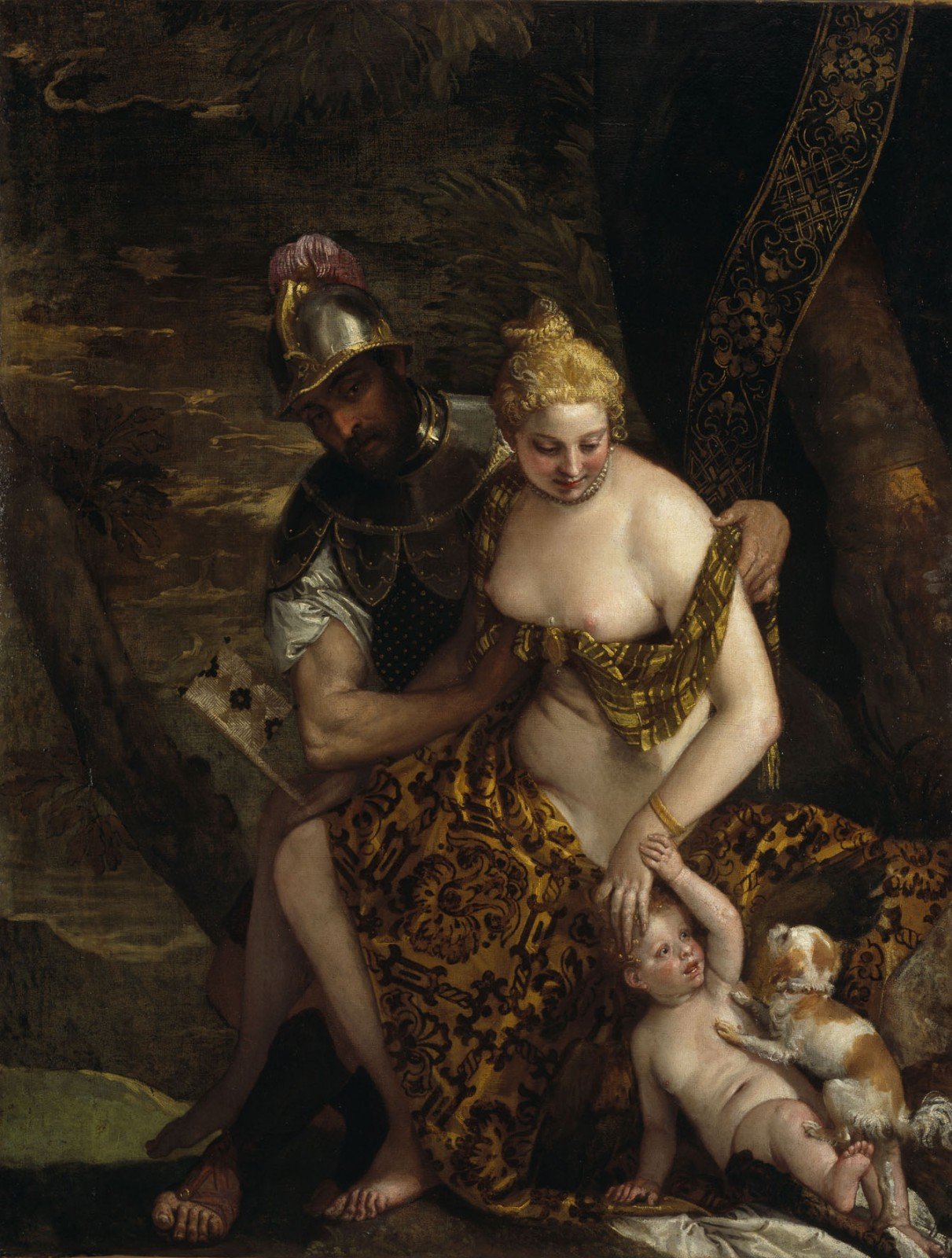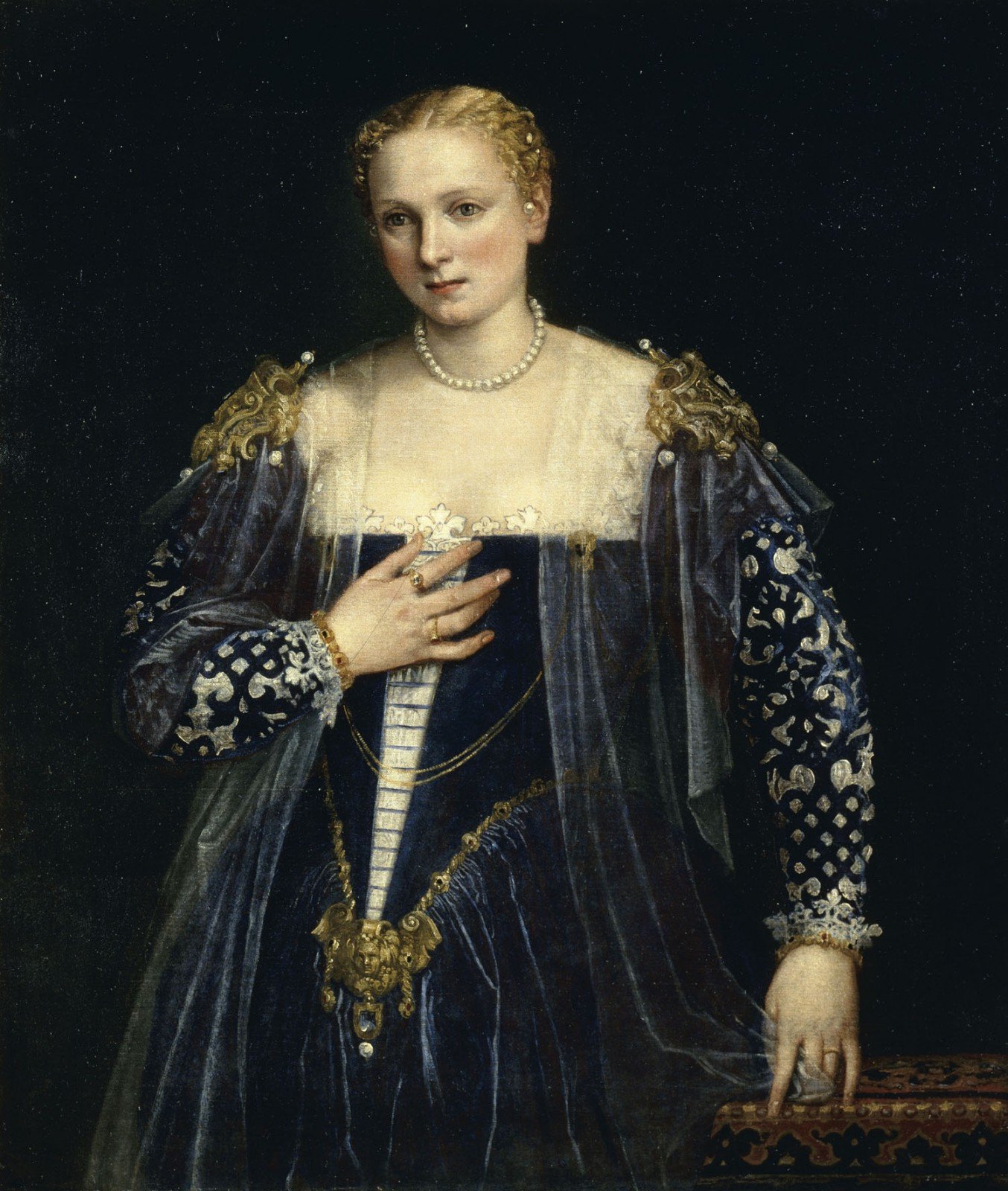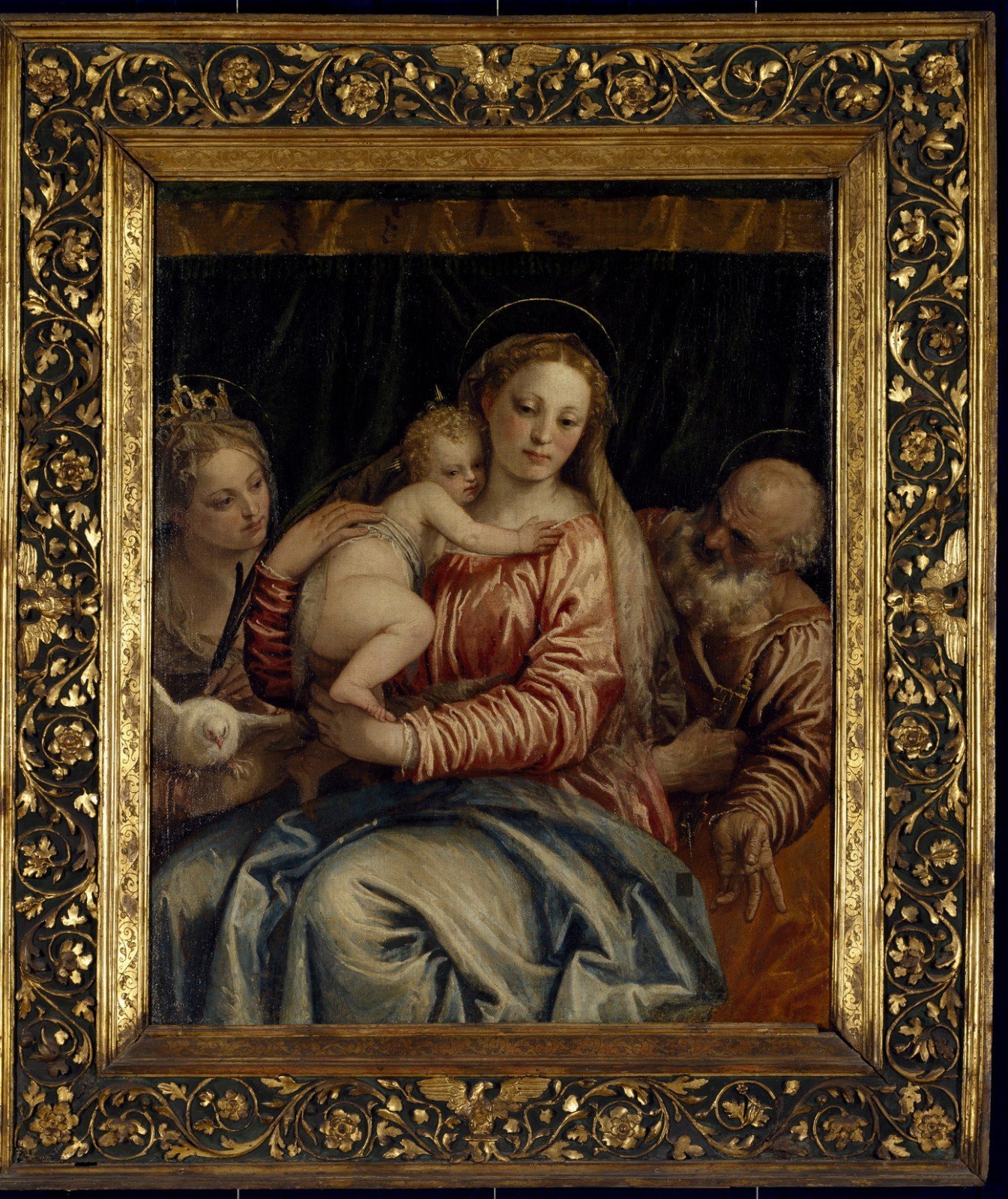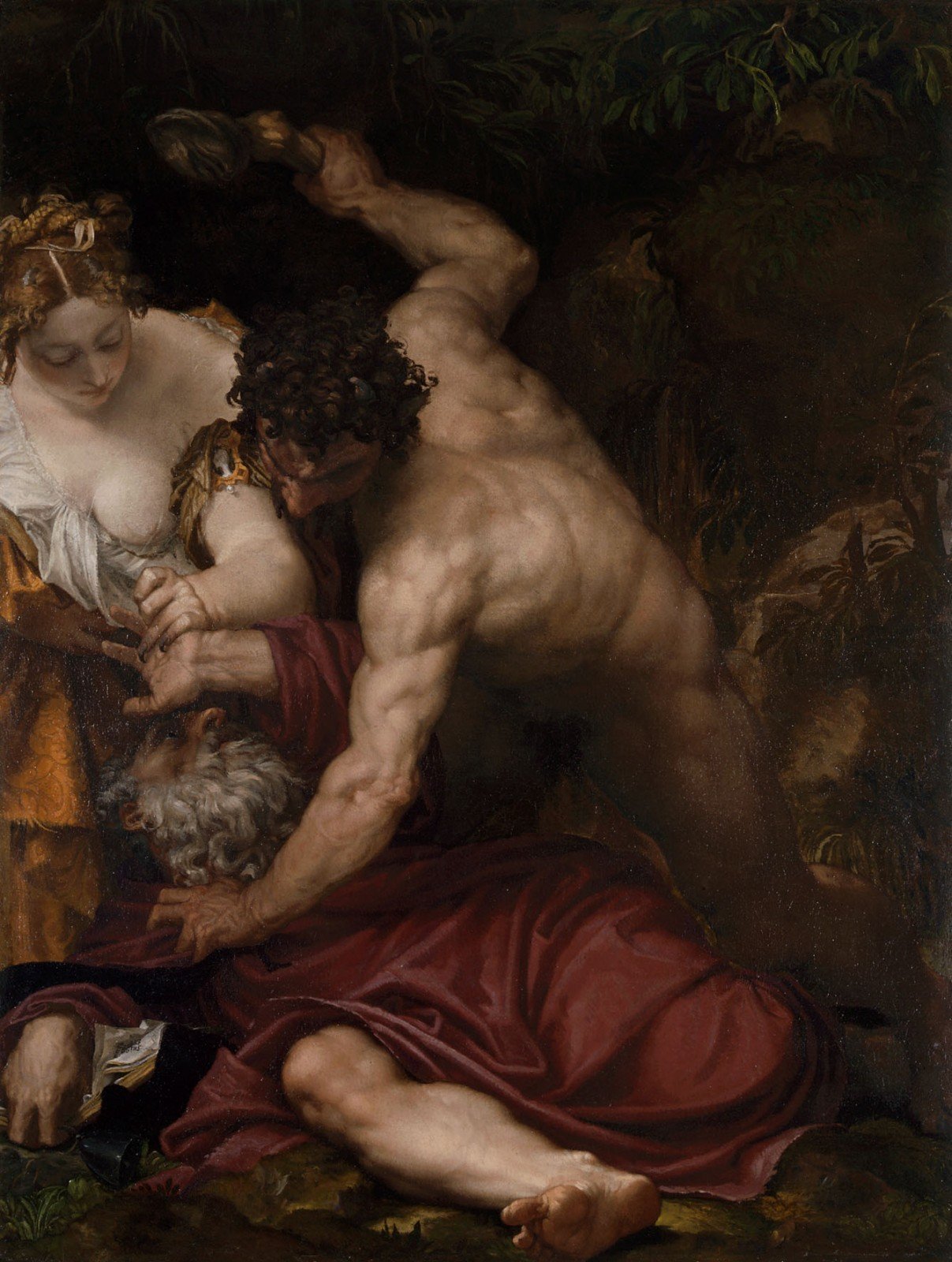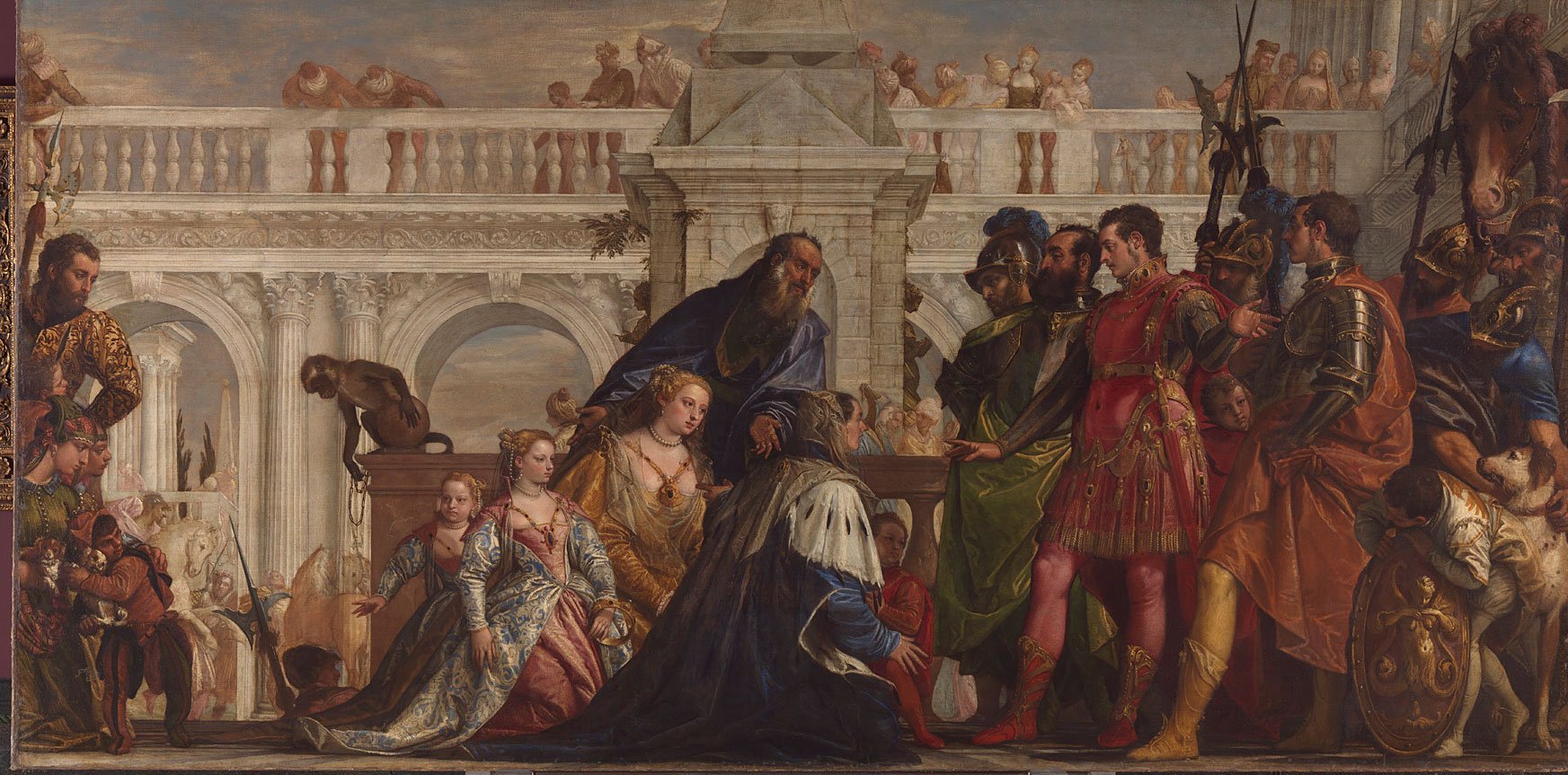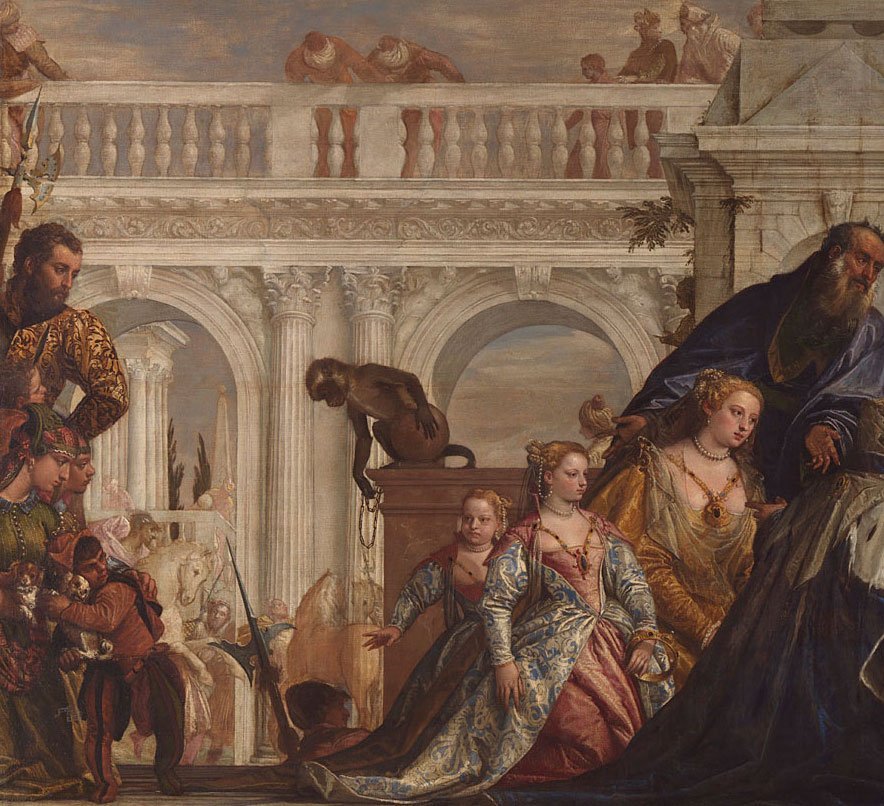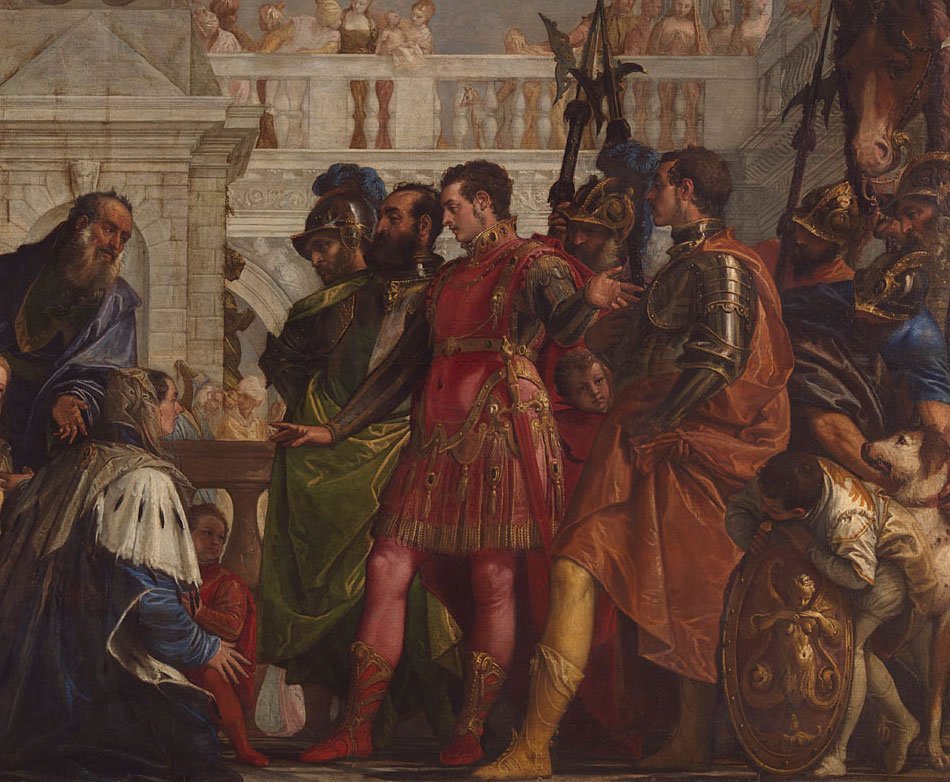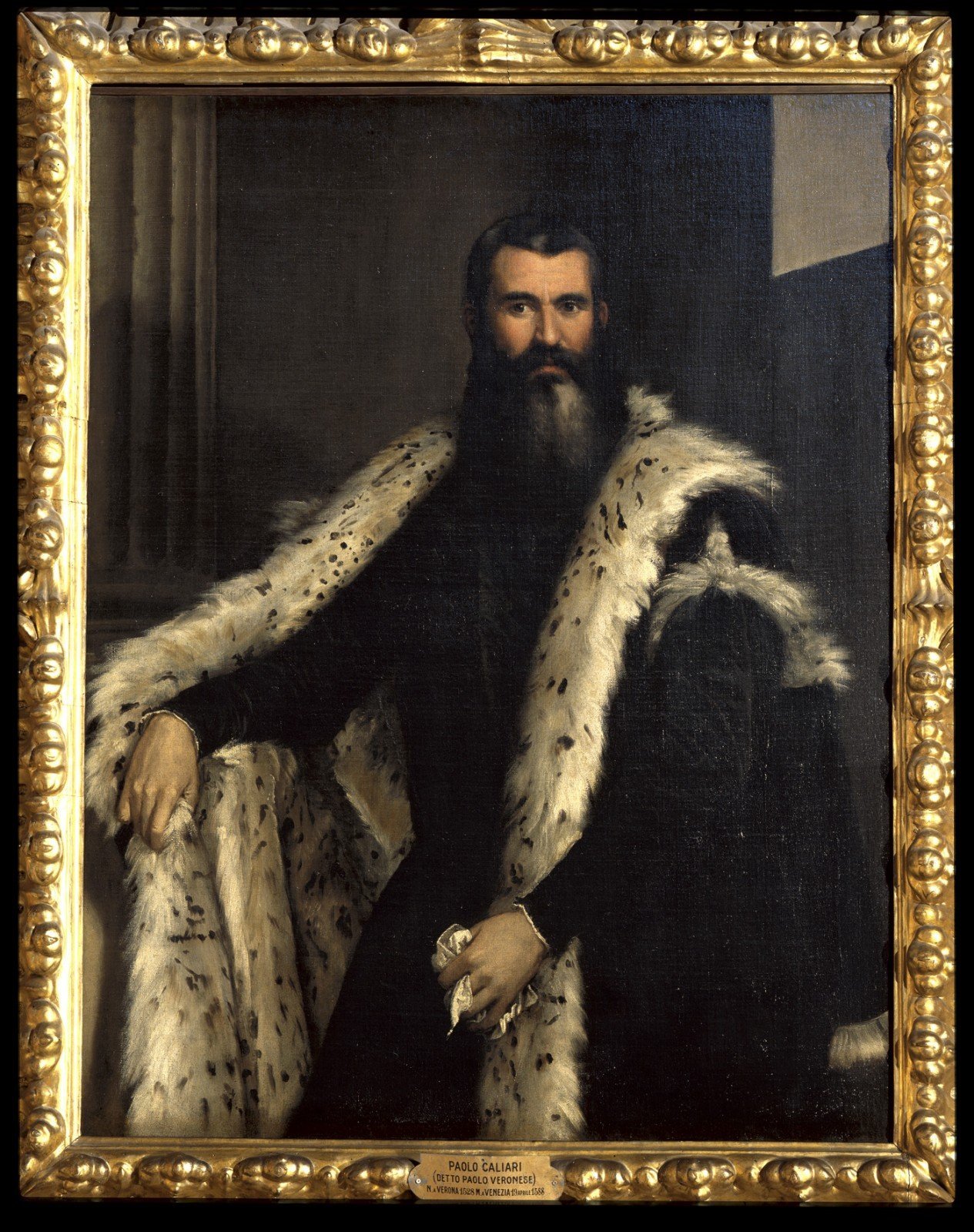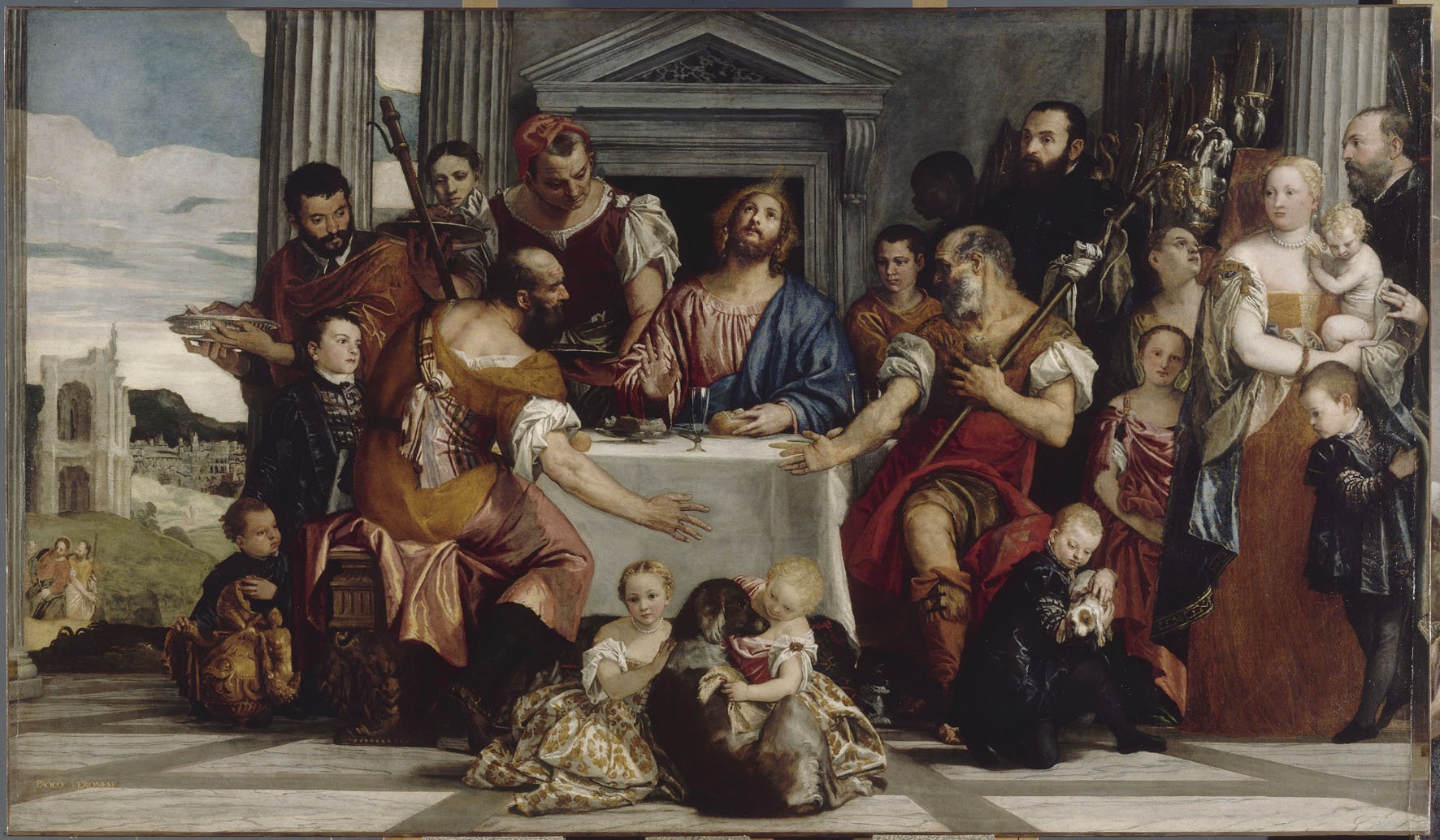Paolo Veronese: a sitcom director in the lush Venice of the XVI century
- Paolo Veronese (1528-1588), “Venus, Mars and Cupid”, about 1580. Oil on canvas, 163 × 125 cm © National Galleries of Scotland
- Paolo Veronese (1528-1588), Portrait of a Lady, known as the “Bella Nani”, about 1560-5. Oil on canvas, 119 × 103 cm. Musée du Louvre, Paris © RMN (Musée du Louvre)/All rights reserved
- Paolo Veronese (1528-1588), “The Virgin and Child with Saint Peter and a Female Saint”, about, 1550-5, Oil on canvas, 119 × 95 cm. Pinacoteca Civica, Vicenza © Courtesy Musei Civici Vicenza
- Paolo Veronese (1528-1588), “The Temptation of Saint Anthony”, 1552. Oil on canvas, 198 × 151 cm. Musée des Beaux Arts de Caen © Musée des Beaux Arts de Caen, Martine Seyve Photographe
- Paolo Veronese (1528-1588), “The Family of Darius before Alexander,” 1565-7. Oil on canvas, 236.2 × 474.9 cm © The National Gallery, London
- Paolo Veronese (1528-1588), “The Family of Darius before Alexander,” detail, 1565-7. Oil on canvas, 236.2 × 474.9 cm © The National Gallery, London
- Paolo Veronese (1528-1588), “The Family of Darius before Alexander,” detail, 1565-7. Oil on canvas, 236.2 × 474.9 cm © The National Gallery, London
- Paolo Veronese (1528-1588), “Portrait of a Gentleman”, about 1555. Oil on canvas, 104.5 × 108 cm. Galleria Palatina, Palazzo Pitti, Florence© Soprintendenza Speciale per il Polo Museale Fiorentino
- Paolo Veronese (1528-1588). « The Supper at Emmaus », about 1555. Oil on canvas, 290 × 488 cm. Musée du Louvre, Paris © RMN (Musée du Louvre)/Gérard Blot
Paolo Caliari, best known as Veronese, was born in 1528 in Verona where he completed major commissions for churches and aristocratic families. At the beginning of the decade of 1550 he moved to Venice, a city from where he would then come and go. Here, backed by Titian, working alongside Jacopo Sansovino and Andrea Palladio, Veronese emerged as one of the greatest European artists. Conceptual Fine Arts visited the “retrospective” show that the National Gallery in London dedicates to him: “Veronese, Magnificence in renaissance Venice” (until 15 June). The exhibition gathers 50 high quality works from different museums throughout the world. From the the big paintings’ set up respecting the original point of view for which they were conceived, to the minimalistic booklet to be picked up at the entrance that avoids visitors to crowd in front of the captions, all these aspects ensure this show to become a landmark in museology.
The exhibition’s title also appears to be very appropriate indeed to describe Veronese’s art, linked to the idea of pomp and splendour that, even today, we have of the Republic of Venice of the XVI century. But the magnificence that is mentioned in the title is not the only category to describe the art of Veronese. His painting, in fact, is often considered narrative and descriptive at the same time. And it is certainly so. But as noted by some scholars, his art is not limited only to description. Rather, the painting by Veronese is achieved in the implementation of a realistic picture on the level of imagination. In his works – even in portraits – there is always a desire to idealize the figures.
Certainly, Titian’s narrative approach to composition and colouring was a very important source for Veronese. In addition to that, Raphael, the Central Italian tradition, Giulio Romano, the Venetian colleague and rival Tintoretto, and the sinuous line of Parmigianino were also important examples for his art. To some extent however, the entire work of Veronese is not only realistic but, in a broader sense, also conceptual. The always unpredictable architecture framing the scenes, the attention he pays to the cloths of the characters belonging to his epochs that are mixed with the religious figures, as well dressed with a particular care. The many effects he employs to draw the “audience” into the scenes as if the picture was a pop sitcom.
One of his specialties were large-scale scenes of feasts, such as The Supper at Emmaus painted for a Dominican friar in 1573 (now in the Accademia in Venice). This painting challenged the Inquisition by including a wealth that was considered disrespectful of the religious decorum.
Yet, even these details are not intended as a results of a naturalistic investigation but as a pretext to exercise his pure enjoyment of color. It is in this latter aspect, therefore, that you can notice the deep bond of Veronese with the legacy of Mannerism. And perhaps it is this very personal way to mix reality and imagination that will make him a very influential source for artists such as Van Dyck, Rubens, Watteau, Tiepolo, and Delacroix.
July 18, 2015

